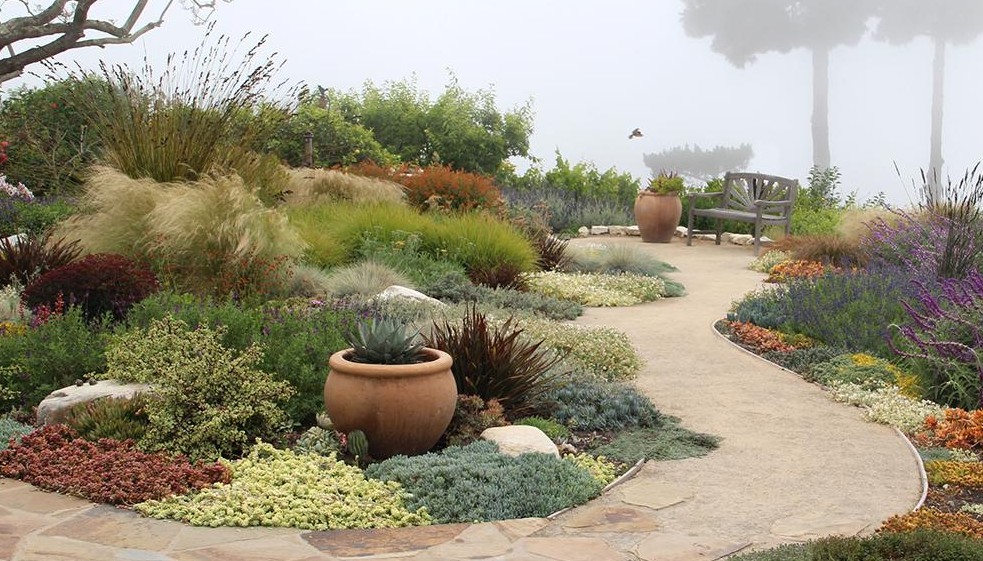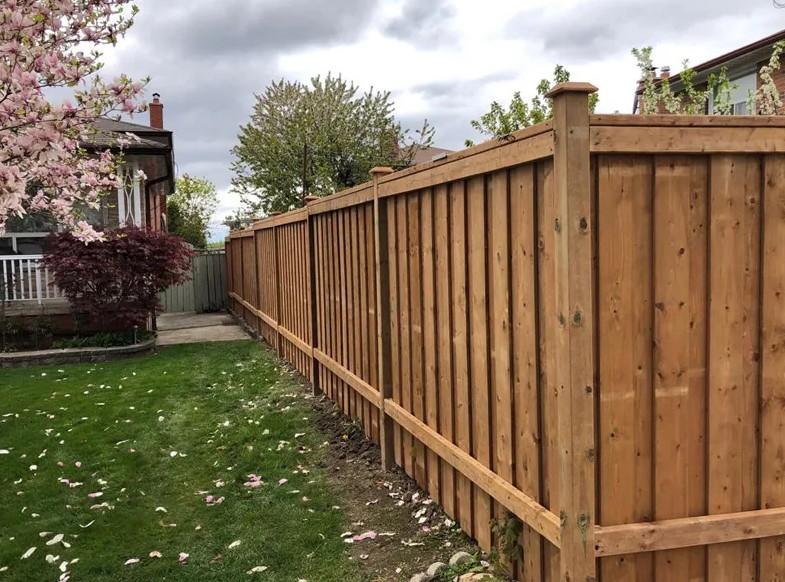1. Introduction
With climate change intensifying and water becoming an increasingly precious resource, homeowners are looking for smart and sustainable ways to maintain beautiful outdoor spaces without draining the tap. Drought-resistant landscaping—also known as xeriscaping—has emerged as an eco-friendly solution that blends aesthetics with water conservation. Whether you live in a dry climate or simply want to cut down on your water bill, incorporating drought-tolerant design strategies can make a huge impact. In this guide, we’ll explore the top drought-resistant landscaping ideas that not only save water but also transform your yard into a stunning, low-maintenance oasis.
2. What is Drought-Resistant Landscaping?
Drought-resistant landscaping, often referred to as xeriscaping, is a strategic approach to garden and yard design that minimizes water usage while maintaining beauty and functionality. Instead of relying on traditional lawns and thirsty plants, this method focuses on using native and drought-tolerant species, efficient irrigation systems, and smart design principles to reduce water waste.
The goal isn’t just to survive dry spells—it’s to thrive in them. By selecting plants that naturally require less water and pairing them with water-saving techniques like mulching, hydrozoning, and drip irrigation, homeowners can create landscapes that are both resilient and attractive. Whether you’re in a desert region or simply looking to conserve water, drought-resistant landscaping offers a sustainable solution that benefits both the environment and your wallet.
3. Top Drought-Resistant Landscaping Ideas
3.1 Embrace Xeriscaping Principles
Xeriscaping is more than just a buzzword—it’s a proven landscaping philosophy centered around water efficiency and sustainability. At its core, xeriscaping involves designing your outdoor space with plants and materials that naturally thrive in your local climate, requiring minimal irrigation and upkeep.
Key xeriscaping principles include:
-
Planning and Design: Begin with a thoughtful layout that groups plants by water needs and sunlight exposure. This method, known as hydrozoning, ensures efficient irrigation and healthier growth.
-
Soil Improvement: Enhancing soil with organic matter helps it retain moisture, making it more suitable for drought-tolerant plants.
-
Efficient Irrigation: Swap traditional sprinklers for drip systems or soaker hoses, which deliver water directly to plant roots with minimal waste.
-
Mulching: Applying mulch reduces evaporation, suppresses weeds, and regulates soil temperature.
-
Low-Water Plants: Choose native or drought-tolerant species that are well-adapted to your region’s climate and require little supplemental water.
Embracing xeriscaping not only conserves water but also results in a landscape that’s resilient, visually appealing, and environmentally responsible.
3.2 Replace Lawn Grass with Ground Covers
Traditional lawns are often the biggest water consumers in a landscape, requiring frequent watering, mowing, and maintenance. One of the most effective drought-resistant landscaping ideas is to replace thirsty lawn grass with low-water ground covers. These plants spread across the soil, providing a lush, green appearance while demanding significantly less water and care.
Popular drought-tolerant ground covers include creeping thyme, sedum, clover, and native grasses that are adapted to your local environment. Ground covers not only save water but also help prevent soil erosion, reduce weeds, and add texture and color to your garden. By swapping out your traditional lawn for these hardy plants, you create a sustainable, eye-catching landscape that thrives even in dry conditions.
3.3 Choose Native and Drought-Tolerant Plants
Selecting native and drought-tolerant plants is a cornerstone of water-wise landscaping. Native plants are naturally adapted to the local climate, soil, and rainfall patterns, making them more resilient and less dependent on supplemental watering. Similarly, drought-tolerant plants have evolved to survive with minimal water, storing moisture in their leaves or roots and reducing evaporation.
Incorporating these plants into your garden not only conserves water but also supports local wildlife like bees, butterflies, and birds. Examples include lavender, agave, yucca, succulents, and many ornamental grasses. By choosing species that thrive naturally in your area, you reduce maintenance needs, promote biodiversity, and create a beautiful, sustainable landscape that flourishes even during dry spells.
3.4 Install Efficient Drip Irrigation Systems
An efficient drip irrigation system is a game-changer for conserving water in drought-resistant landscaping. Unlike traditional sprinkler systems that spray water over a wide area—often resulting in evaporation and runoff—drip irrigation delivers water directly to the roots of plants through a network of tubes and emitters. This targeted approach ensures that water is used precisely where it’s needed, minimizing waste.
Drip systems are highly customizable, allowing you to adjust flow rates based on each plant’s water requirements. They also reduce the risk of fungal diseases by keeping foliage dry and can be automated with timers for convenience. Installing a drip irrigation system not only helps you save water but also promotes healthier plant growth and reduces your overall gardening effort.
3.5 Use Mulch to Retain Moisture
Mulching is a simple yet highly effective way to conserve water in your drought-resistant landscape. By covering the soil with a layer of organic or inorganic mulch—such as wood chips, bark, straw, or gravel—you create a protective barrier that slows down evaporation, keeps the soil cooler, and reduces weed growth.
Mulch also helps maintain consistent soil moisture levels, allowing plant roots to access water more easily during dry periods. Additionally, organic mulches break down over time, enriching the soil with nutrients and improving its structure. Incorporating mulch around your plants is an easy, cost-effective strategy that enhances water retention and supports a healthier, more resilient garden.
3.6 Design with Hardscaping Elements
Incorporating hardscaping elements into your drought-resistant landscape is an excellent way to reduce water use while adding structure and style to your outdoor space. Hardscaping refers to the non-plant features such as patios, walkways, rocks, gravel, retaining walls, and decorative stone borders.
These elements not only create visual interest and define different areas of your garden but also reduce the overall amount of water needed by minimizing planted areas. Using permeable materials for hardscaping can help manage rainwater runoff and encourage natural absorption into the soil. By thoughtfully blending hardscaping with drought-tolerant plants, you can design a beautiful, low-maintenance landscape that conserves water and stands up to dry conditions.
3.7 Collect Rainwater for Irrigation
Collecting rainwater is a smart and sustainable practice that complements drought-resistant landscaping perfectly. By installing rain barrels or larger rainwater harvesting systems, you can capture and store rainwater from your roof and other surfaces to use later for watering your garden.
This method reduces your reliance on municipal water supplies and lowers your water bills while providing plants with natural, chemical-free irrigation. Using collected rainwater also helps manage stormwater runoff, preventing erosion and flooding in your yard. Setting up a rainwater collection system is an eco-friendly way to make the most of every drop and keep your drought-tolerant garden thriving even during dry spells.
3.8 Group Plants by Water Needs (Hydrozoning)
Hydrozoning is a smart landscaping strategy that involves grouping plants with similar water requirements together. By organizing your garden this way, you can tailor your irrigation system to deliver the right amount of water to each zone, preventing overwatering and water waste.
For example, drought-tolerant plants can be placed in one area with minimal irrigation, while more water-loving plants are grouped in another zone with a higher watering schedule. This method not only conserves water but also promotes healthier plants by meeting their specific hydration needs. Hydrozoning simplifies watering routines and enhances the efficiency of your drought-resistant landscape design.
3.9 Opt for Decorative Rocks and Gravel
Using decorative rocks and gravel in your drought-resistant landscape is both practical and aesthetically pleasing. These materials require no water, help suppress weed growth, and reduce soil erosion, making them ideal for dry climates.
Rocks and gravel can be used as ground cover, in pathways, or as accents around plants, adding texture and contrast to your garden design. They also help retain soil moisture by reducing evaporation and providing a natural barrier against harsh sunlight. Incorporating these elements not only cuts down on water usage but also creates a low-maintenance and visually appealing outdoor space that stands up to drought conditions.
3.10 Incorporate Raised Beds and Container Gardens
Raised beds and container gardens are excellent additions to drought-resistant landscaping because they allow for better control over soil quality and moisture levels. These gardening methods improve drainage and reduce water runoff, ensuring that plants receive the right amount of hydration without waste.
Raised beds can be filled with well-draining, nutrient-rich soil mixes tailored to the needs of drought-tolerant plants, while containers offer flexibility to move plants to optimal sunlight or shade. Both options make it easier to implement efficient watering techniques like drip irrigation and conserve water. Incorporating raised beds and containers not only maximizes space but also enhances the overall health and resilience of your drought-friendly garden.
3.12 Maintain Soil Health
Maintaining healthy soil is fundamental to successful drought-resistant landscaping. Well-nourished soil retains moisture more effectively, supports robust root growth, and improves plant resilience during dry spells.
To maintain soil health, regularly add organic matter such as compost or mulch, which enriches the soil with nutrients and enhances its water-holding capacity. Avoid over-tilling, which can damage soil structure, and consider soil testing to monitor nutrient levels and pH balance. Healthy soil acts as a natural sponge, reducing the need for frequent watering and helping your drought-tolerant plants thrive with less water input.
4. Additional Water-Saving Tips
In addition to choosing drought-resistant plants and efficient landscaping techniques, there are several extra steps you can take to save water in your garden. First, water your plants early in the morning or late in the evening to reduce evaporation caused by the sun’s heat. Using drip irrigation or soaker hoses delivers water directly to the roots, minimizing waste.
Regularly check your irrigation system for leaks or clogs to ensure water is used efficiently. Incorporate rain sensors or smart irrigation controllers that adjust watering schedules based on weather conditions. Finally, avoid overwatering by monitoring soil moisture and only watering when necessary. These additional water-saving practices will help you create a sustainable, thriving landscape while conserving precious resources.
5. Conclusion
Creating a drought-resistant landscape is a smart and sustainable way to conserve water while maintaining a beautiful outdoor space. By embracing xeriscaping principles, choosing native and drought-tolerant plants, incorporating efficient irrigation methods, and adding thoughtful design elements like hardscaping and shade structures, you can build a garden that thrives even in dry conditions.
Implementing these water-saving strategies not only benefits the environment but also reduces your water bills and lowers maintenance efforts. Start planning your drought-resistant landscape today to enjoy a greener, more resilient garden that stands strong through every season.

